Take a Photo Tour
On the CASE: Child Advocates for Social Empowerment
Photography: © 2013 Marilyn Smith, Journalist
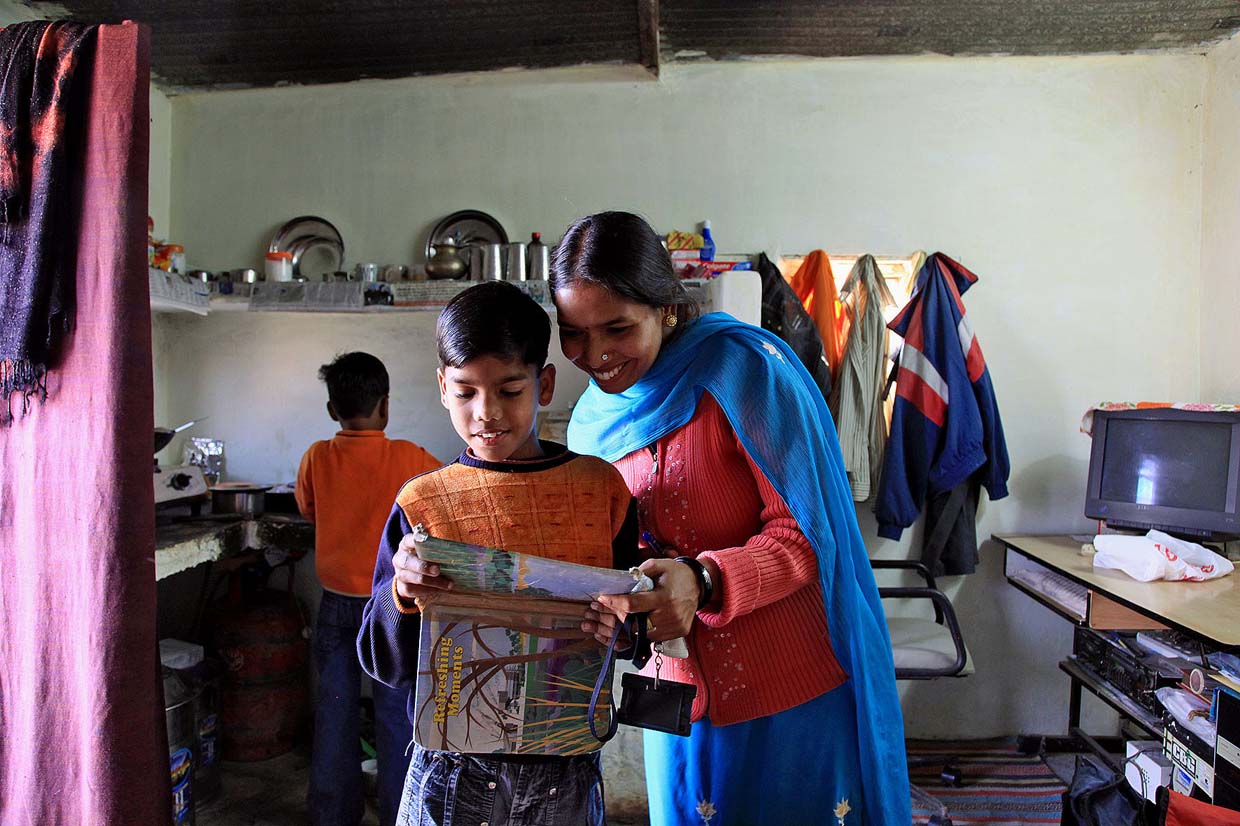
Veena (29 years) and her sons are third- and fourth-generation residents of Janta Colony – a community of 14 000 people that butts against the limits Chandigarh, the capital of Punjab and India’s most modern city. But you won’t find Janta Colony on any state or city map, an oversight that allows all levels of government to consider it a temporary slum or bustee in local slang. Photography © 2009 Marilyn Smith.

Temporary slum. Photography © 2009 Marilyn Smith.

Situated on India’s northern plains, the bustee is hot and dry much of the year; temperatures can soar to 45°C or more in the summer. Even in late November, just before the winter cold sets in, it is warm enough at 9:00 am to enjoy being on an open rooftop. Veena joins 15 other bustee residents for 20 minutes of yoga. It is a time to put some distance between their daily lives and their roles as agents of change. Photography © 2009 Marilyn Smith.

Over the past six years, Developing Indigenous Resources (DIR) has given this team of Health Promoters (HPs) daily training in health fundamentals, including a strong focus on nutrition and disease prevention. DIR believes that three inexpensive pieces of equipment – bathroom scales, stethoscopes and blood pressure gauges – can be powerful tools to monitor the general health of residents. Photography © 2009 Marilyn Smith.

Each HP is responsible for 200 households in Janta Colony. One of their main jobs is to track, on a monthly basis, the weight of every child under the age of five years. These visits create a natural opportunity to share knowledge on many health-related topics. Photography © 2009 Marilyn Smith.
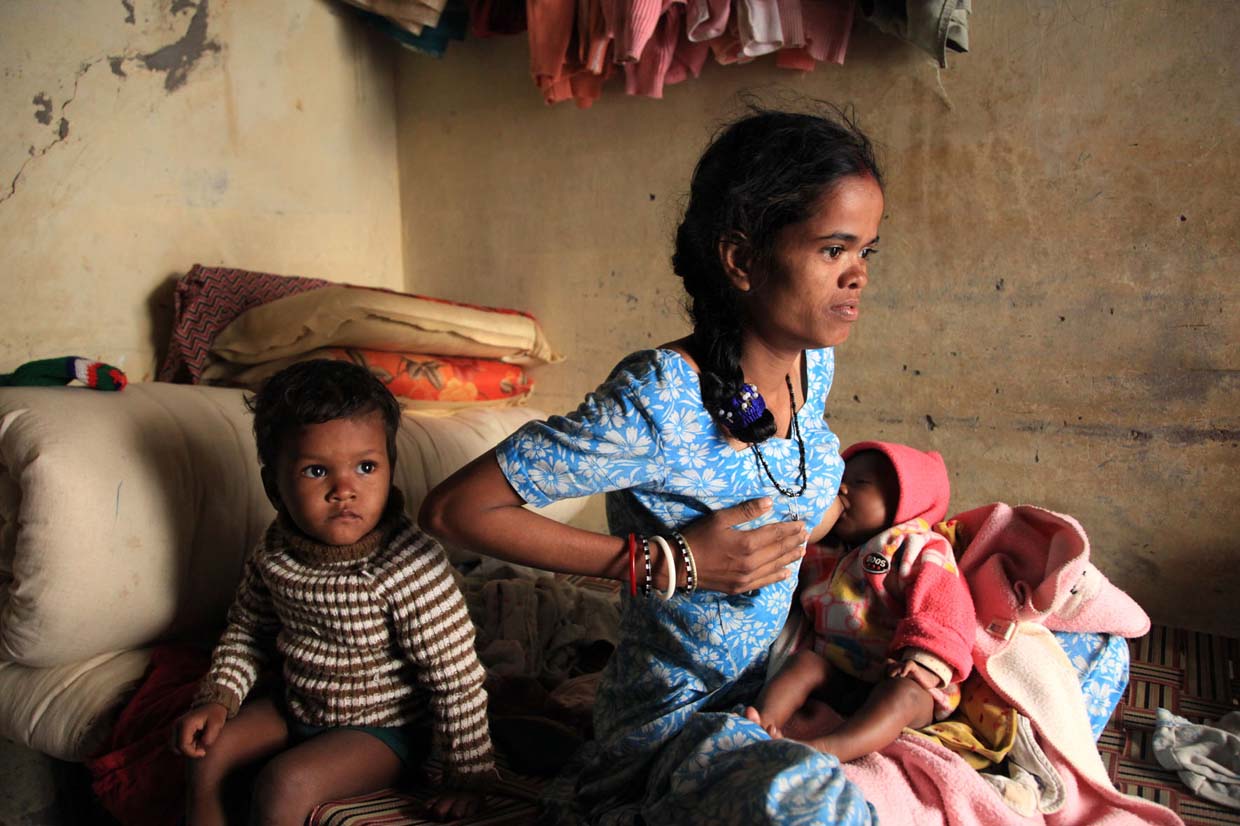
As in most slums, general poverty makes malnutrition a primary concern; but high rents in Janta Colony contribute to a higher incidence of severe cases. Champa (22), together with her second baby (2 months), barely pushes the needle on the scale to 34 kg. Photography © 2009 Marilyn Smith.
Album 1 -1/6

For DIR, monitoring child health begins at the earliest possible moment. HPs visit pregnant mothers every month to monitor weight, blood pressure and foetal heartbeat. Often, their visits are a kind of “community health” as friends and neighbours listen in. Photography © 2009 Marilyn Smith.

The effects of early malnutrition can be life-long. Chandigarh doctors attribute Prem’s blindness, at least in part, to his mother’s severely malnourished condition during pregnancy. In addition, he was born at home in a remote village with no immediate access to medical care. Photography © 2009 Marilyn Smith.

DIR HPs are recognised for more than their blue jackets. Bustee residents such as Rangeelie, particularly those with little or no education, have come to view the HPs as local experts and welcome their arrival. Photography © 2009 Marilyn Smith.

As most homes in Janta Colony have only one or two rooms, much of daily life transpires outdoors and even very young children are exposed to the elements. Photography © 2009 Marilyn Smith.

By mid-day, a self-inflicted blast of cold water on the front porch can be sheer delight, but most homes lack running water so having a bath starts with hauling a bucket. Photography © 2009 Marilyn Smith.

But water is a serious problem in the bustee. Poor maintenance of limited drainage systems leads to back-up of waste water. Within steps of every doorway, non-biodegradable matter floats atop fermenting organic waste while a variety of insects, including malaria-bearing mosquitoes, skim the surface. Photography © 2009 Marilyn Smith.

Traversing the bustee invariably means passing within inches of wide expanses of open swamps or equally contaminated creeks (nullahs) that flow between rows of tightly packed houses. Photography © 2009 Marilyn Smith.
Album 2 -1/7
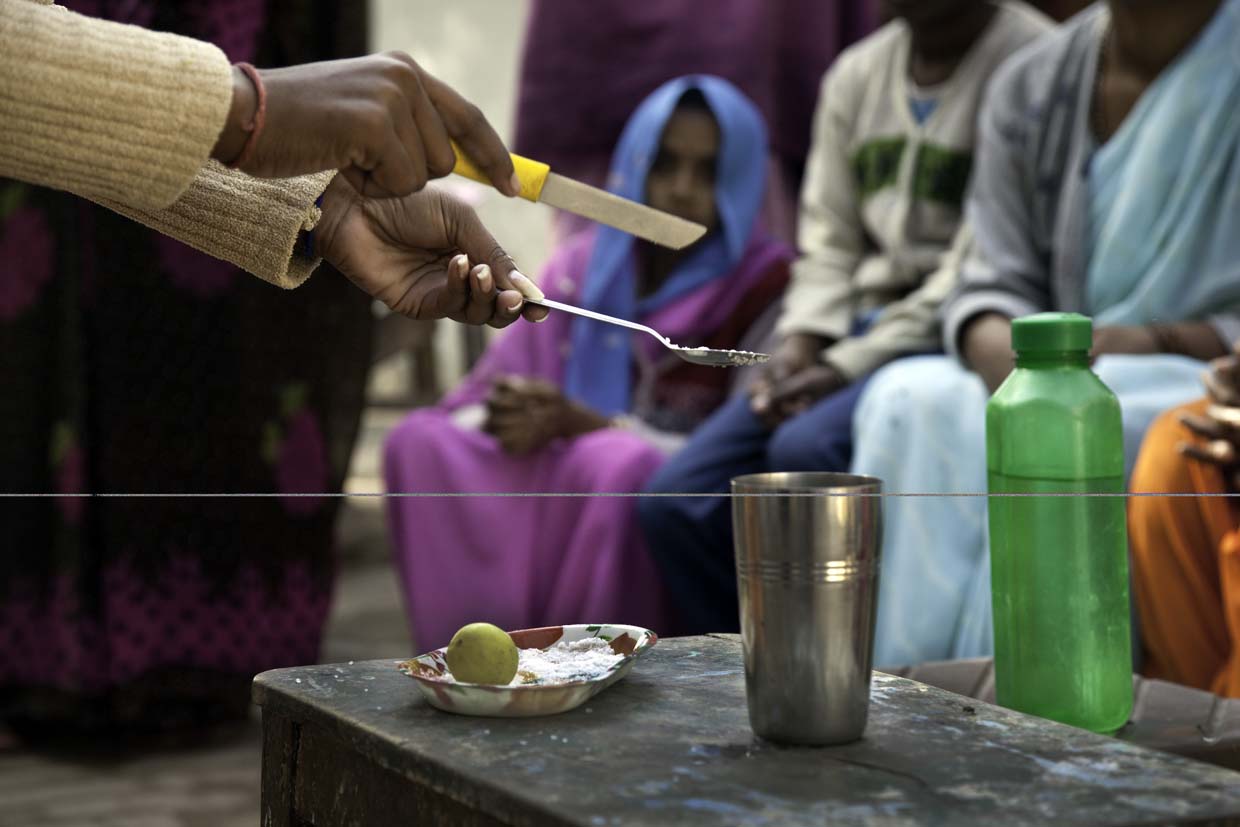
The biggest risk for bustee children is contracting diarrheal diseases from poor hygiene, contaminated food or dirty water. For infants and toddlers, severe dehydration can spiral downward to death in just hours. DIR makes it a priority to teach every woman how to mix an oral rehydration solution from basic kitchen ingredients: boiled water, salt, sugar and baking soda. A squirt of lemon masks the terrible taste. Photography © 2009 Marilyn Smith.

As HPs got to know the families in their sectors, they realised that many women work long hours cleaning houses or selling goods in the streets of Chandigarh. It often falls to the eldest child to carry out household chores and take care of their younger brothers and sisters. Photography © 2009 Marilyn Smith.

Sometimes, as in the case of Madhu, the child left in charge may be no more than seven or eight years old. Photography © 2009 Marilyn Smith.
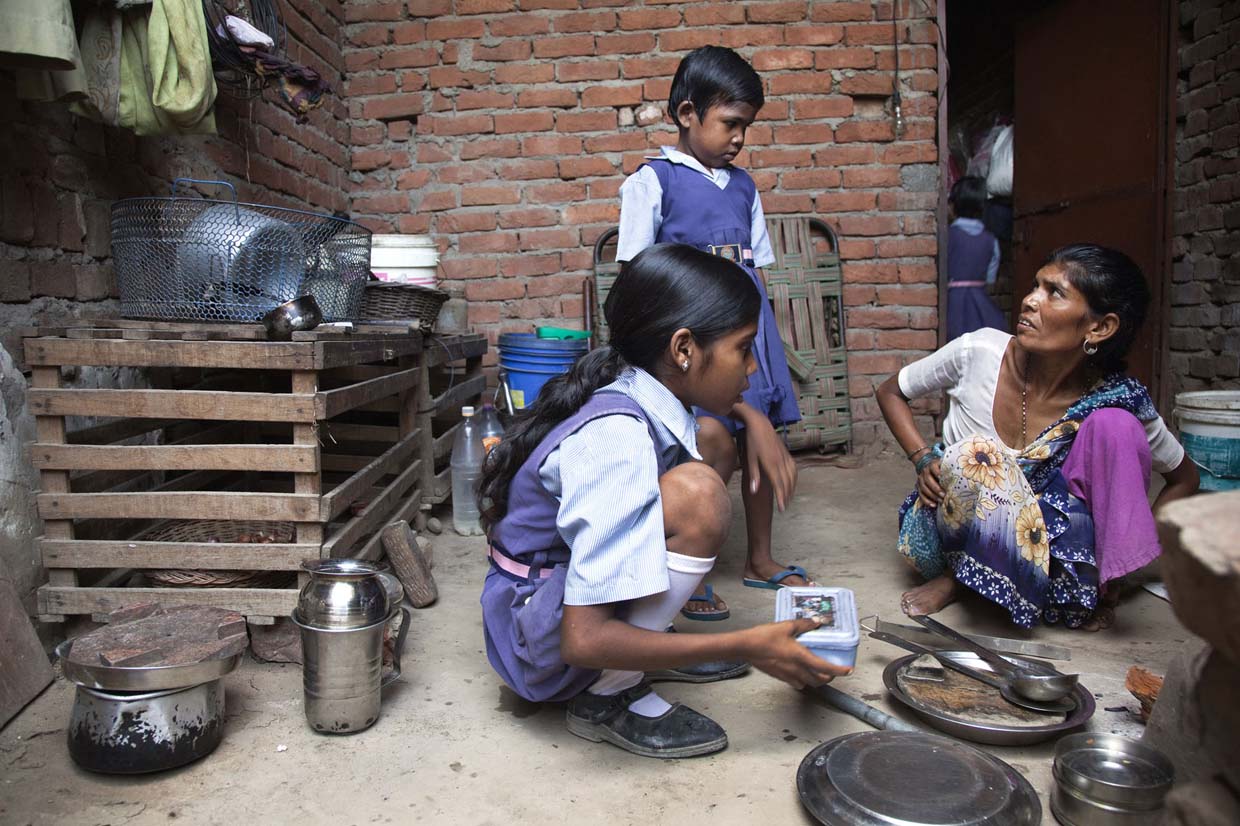
When DIR recognised the responsibility older kids carry, it began an after-school programme for those aged 9 to 13 years. Child Advocates for Social Empowerment (CASE) uses fun and games to teach basic health and hygiene. Participants like Ruby are encouraged to share their new knowledge with their parents and siblings. Photography © 2009 Marilyn Smith.
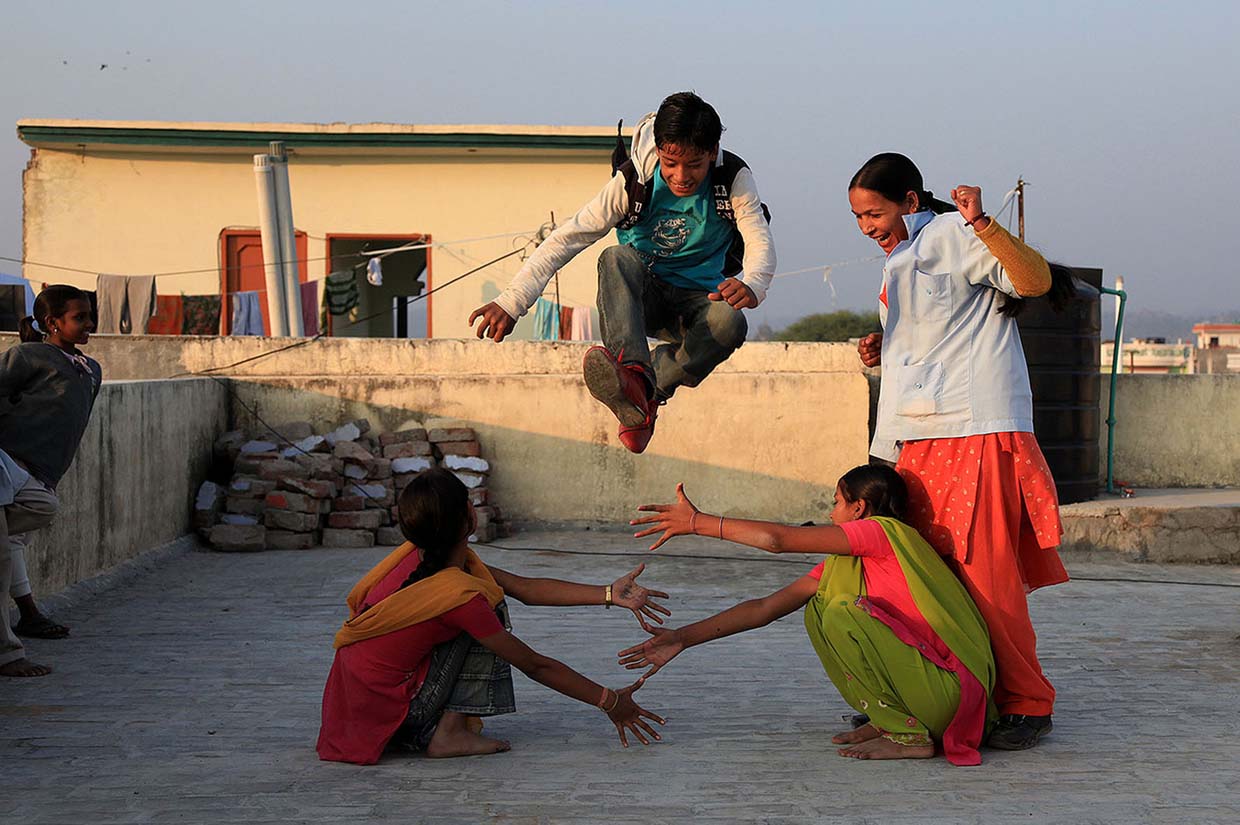
A more subtle aim of CASE is to promote the social and physical development of these pre-teens by making sure they have a chance to have fun – away from the family responsibilities. Photography © 2009 Marilyn Smith.

HPs devote late afternoons, the most likely time to find women at home, to giving courtyard cooking classes. Menus are carefully prepared by DIR’s nutritionist to derive optimal benefit from locally available fresh produce and to keep prices at less than two rupees per person (CDN 0.05 or EUR 0.02). Photography © 2009 Marilyn Smith.
Album 3 -1/6

Vaishakha’s birthday party was a sign of success. The menu included cake and snacks, but also a well-balanced meal of rice, dal and vegetables. Her mother and aunts used to believe that “expensive” food equalled healthy food. Following HP advice, they’ve stopped buying processed foods and watched their collection of eight children move from the “Red” to “Green” Zones on DIR health charts. Photography © 2009 Marilyn Smith.

DIR statistics, confirmed by an independent assessment, show that the HP strategy is working. The incidence of severe malnutrition amongst children dropped from 87% in 2004 to 40% in 2010, and almost 100% of bustee women gave birth at the hospital – compared to the national average of only 41%. Photography © 2009 Marilyn Smith.

HPs also remind mothers about upcoming immunisation clinics held in the bustee and assist government officials. As a result, immunisation rates are 85% to 93% (depending on the disease) compared to 55% to 78% nationally. Photography © 2009 Marilyn Smith.

Despite these positive gains, deeper analysis showed that DIRs efforts were having the least impact on the neediest children. Monthly visits were not enough to make a difference for those who are “grossly underweight” – a condition that creates high risk for other health problems. Photography © 2009 Marilyn Smith.

At the age of 3 years and 6 months, a healthy child should weigh 13 kg to 14 kg. Yashika weighs just 9.5 kg. A weak immune system likely played a role in her contracting tuberculosis from her mother Sangeeta, from whom she remains inseparable. Photography © 2009 Marilyn Smith.

Jyoti is one of the most severe cases: at 16 months, she weighs only 5 kg, yet her stick-thin legs are too weak to stand on. Her pale hair, skin lesions and protruding ribs suggest the onset of protein energy malnutrition. Desperate for nourishment, her body is drawing on its own reserves of muscle and fat. Photography © 2009 Marilyn Smith.
Album 4 -1/6

DIR turned to the CASE kids for help by launching an “adoption contest”. By agreeing to visit a needy child at least twice per week, Harnul and the others could “earn” the chance to win prizes. The HPs would use two indicators to measure progress: the growth chart of the child and the family’s knowledge of what CASE kids have been taught. Photography © 2009 Marilyn Smith.

During one of her visits, Ruby starts by showing Jyotis mother how to mix the oral rehydration solution. Later, while helping bathe and dress Jyoti, Ruby lectures the mother about keeping the house cleaner and preparing more balanced meals. Photography © 2009 Marilyn Smith.
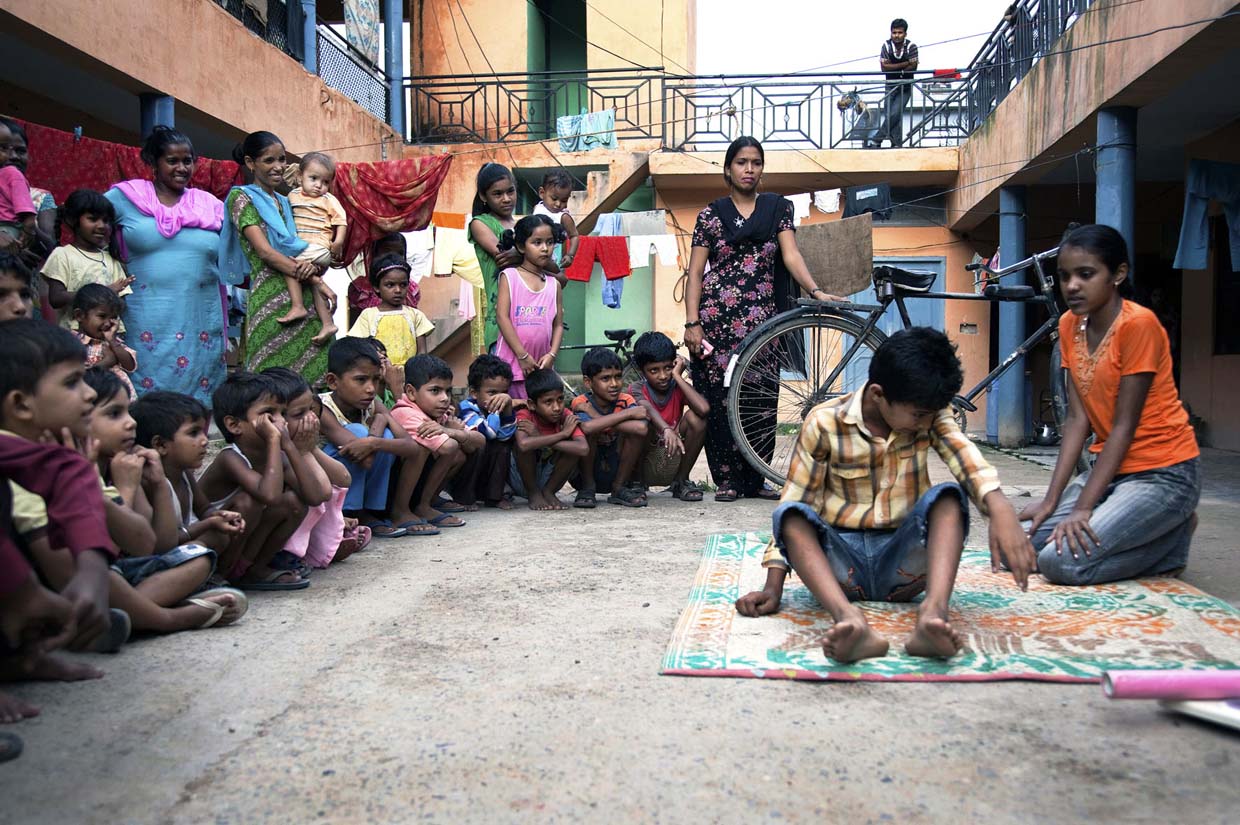
To educate more members of the community, the CASE kids write and perform street theatre and puppet shows. Afternoon matinees draw large crowds of all ages. Photography © 2009 Marilyn Smith.

As DIR began to achieve its health goals, it expanded its programmes to include education and economic development. The first target was creating an alternative to “schools” in the bustee, which are seriously lacking in facilities and equipment. DIR’s “School with a Difference” prepares pre-schoolers to win scholarships at the best private schools in Chandigarh. Photography © 2009 Marilyn Smith.

In reality, getting a scholarship is just the first challenge. The long trip into the city – either in the DIR van or by auto-rickshaw – means bustee kids typically leave for school while their city-dwelling peers are still sound asleep. Frequent power cuts make it difficult to keep up with homework at night. Photography © 2009 Marilyn Smith.

To empower bustee women, DIR has launched a programme to loan sewing machine machines and distribute donated fabric. Harnul and his sister help their mother stitch small purses or gift bags for wine bottles, which are then sold in retail outlets or to DIR supporters. The work provides extra income while also giving women the chance to work at home and spend more time with their families. Photography © 2009 Marilyn Smith.
Album 5 -1/6
